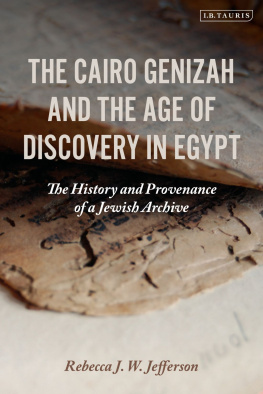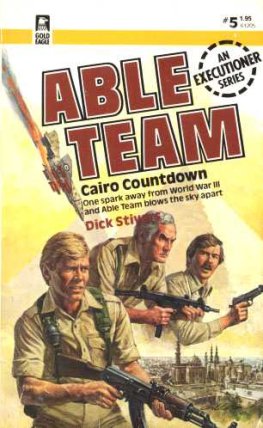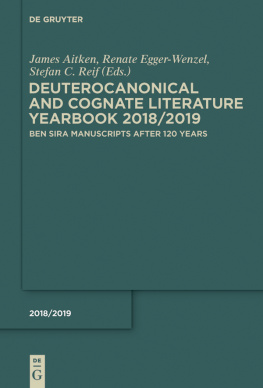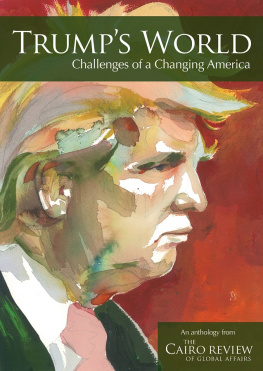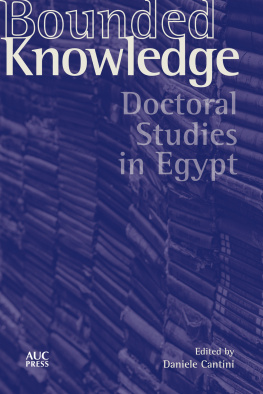Rebecca J. W. Jefferson - The Cairo Genizah and the Age of Discovery in Egypt
Here you can read online Rebecca J. W. Jefferson - The Cairo Genizah and the Age of Discovery in Egypt full text of the book (entire story) in english for free. Download pdf and epub, get meaning, cover and reviews about this ebook. year: 2021, publisher: Bloomsbury, genre: Detective and thriller. Description of the work, (preface) as well as reviews are available. Best literature library LitArk.com created for fans of good reading and offers a wide selection of genres:
Romance novel
Science fiction
Adventure
Detective
Science
History
Home and family
Prose
Art
Politics
Computer
Non-fiction
Religion
Business
Children
Humor
Choose a favorite category and find really read worthwhile books. Enjoy immersion in the world of imagination, feel the emotions of the characters or learn something new for yourself, make an fascinating discovery.
- Book:The Cairo Genizah and the Age of Discovery in Egypt
- Author:
- Publisher:Bloomsbury
- Genre:
- Year:2021
- Rating:4 / 5
- Favourites:Add to favourites
- Your mark:
- 80
- 1
- 2
- 3
- 4
- 5
The Cairo Genizah and the Age of Discovery in Egypt: summary, description and annotation
We offer to read an annotation, description, summary or preface (depends on what the author of the book "The Cairo Genizah and the Age of Discovery in Egypt" wrote himself). If you haven't found the necessary information about the book — write in the comments, we will try to find it.
The Cairo Genizah and the Age of Discovery in Egypt — read online for free the complete book (whole text) full work
Below is the text of the book, divided by pages. System saving the place of the last page read, allows you to conveniently read the book "The Cairo Genizah and the Age of Discovery in Egypt" online for free, without having to search again every time where you left off. Put a bookmark, and you can go to the page where you finished reading at any time.
Font size:
Interval:
Bookmark:

The Cairo Genizah and the Age of Discovery in Egypt
For Robert, Lily and Isaac
The honour of discovering the Genizah belongs to the nameless dealers in antiquities in Cairo who for many years have continually offered its contents to the various libraries of Europe.
Solomon Schechter, 7 August 1897
The Cairo Genizah and the Age of Discovery in Egypt
The History and Provenance of a Jewish Archive
Rebecca J. W. Jefferson

MS. Or. Fol. 1342, a page from Moses W. Shapiras handwritten catalogues. Reproduced with the kind permission of Staatsbibliothek Zu Berlin Preussicher Kulturbesitz, Orientabteilung |
MS. A410, from the David Kaufmann Collection. Reproduced with the kind permission of the Library of the Hungarian Academy of Sciences |
MS. EES III, j. 73, pp. 3-4: a letter from Count Riamo dHulst to Reginald Stuart Poole. Reproduced by the kind courtesy of the Egypt Exploration Society |
CUL MS. Or.1080.13, a letter from Solomon Aaron Wertheimer in Jerusalem to Cambridge University Library, April 1893. Reproduced by kind permission of the Syndics of Cambridge University Library |
MS. Bodl. Heb. f. 51, a fragment of Exodus in shorthand writing, given to the Bodleian Library by A. E. Cowley in 1895. Reproduced by the kind courtesy of the Bodleian Libraries, University of Oxford |
David Simonsen Archives, a letter from Samuel Raffalovich to Rabbi David Simonsen in Copenhagen, 8 September 1899. Reproduced by the kind courtesy of the Royal Danish Library |
MS. T-S 12.863: a copy of Ben Sira 3:6, 3: 8-4:10, labelled by Solomon Schechter and Charles Taylor as MS A. Reproduced by kind permission of the Syndics of Cambridge University Library |
Solomon Schechter Collection. Box 1/15, a letter from Elkan Nathan Adler in London to Solomon Schechter, 20 December 1897. Reproduced by the kind courtesy of the Jewish Theological Seminary Library, New York |
MS ULIB 6/6/1/2, a letter from Henriques & Co. confirming shipment of manuscripts to Cambridge, 19 March 1899. Reproduced by kind permission of the Syndics of Cambridge University Library |
CAJS MS Halper 374, a Yemenite marriage contract from 1892 attributed to the Cairo Genizah. Reproduced by the kind courtesy of the Library at the Herbert D. Katz Center for Advanced Judaic Studies, Kislak Center for Special Collections, Rare Books and Manuscripts, University of Pennsylvania |
Writing about the discovery of the Cairo Genizah is only possible thanks to the incredible work of hundreds of scholars, librarians and writers engaged with genizah fragments now and in the past. But I owe particular thanks to the following people whose key questions, insights, generous sharing of resources, guidance and all-round encouragement have been so immensely important to my research: Malachi Beit-Ari, Siam Bhayro, Piet van Boxel, Nina Caputo, Ezra Chwat, Mark Cohen, Peter Cole, Perry Collins, Giacomo Corazzol, Bess de Farber, Idan Dershowitz, Natalie Dohrmann, Mark Farber, Sarah Fargeon, Mark Geller, Noah Gerber, Nathan Gibson, Mark Glickman, Jessica Goldberg, Stacey Goldring, Haim Gottschalk, David Green, Wissem Gueddich, Mitchell Hart, Tapani Harviainen, Boruch Helman, Adina Hoffman, Lily Kahn, Jason Kalman, Sarah Kemp, Geoffrey Khan, Brian Keith, Arthur Kiron, Dragan Kujundzic, Eve Krakowski, Rachel Leket-Mor, Heidi Lerner, Shlomo and Daphne Leshem, Michael David Lukas, Jason Lustig, Arthur MacGregor, Ginessa Mahar, Michelle Margolis, Yoram Meital, Csar Merchn-Hamman, Emily Madden, Karen Miller, Bruce Nielsen, Ephraim Nissan, Judith Olszowy-Schlanger, Ben Outhwaite, Michael Press, Katalin Rac, Stefan Reif, Gary Rendsburg, Marina Rustow, Ediwn Safer, Gregor Schwarb, David Selis, Nadeen Shaker, Merrill and Robyn Shapiro, Robert Singerman, Renate Smithuis, David Starr, David Stern, Sara Sviri, Sarah Sykes, Laurie Taylor, Nadia Vidro, Ngaio Vince-Dewerse, Ronny Vollandt, Miriam Esther Wagner, Simone Weny, and Oded Zinger, as well as all the helpful librarians, archivists and staff in institutions with genizah fragments or pertinent archives, my former colleagues in the Genizah Research Unit, and everyone involved in the Friedberg Jewish Manuscript Society.
I am deeply grateful to Dean Judith Russell, the George A. Smathers Libraries administrators and the University of Florida for giving me opportunities to engage in research and for the award of a summer sabbatical. Likewise, to all the members of the wonderful Price family who have helped my research through their ongoing support for the Judaica Library. Thanks for support are also due to all my colleagues in the Center for Jewish Studies, the Department of Special and Area Studies collections, and across the libraries, most especially my chair, Elizabeth Haven Hawley.
I extend special thanks to Rory Gormley, commissioning editor at I. B. Tauris, and Yasmin Garcha, assistant editor, for their kind guidance and hard work steering the manuscript through to its final shape; to the copy editor, Mary Rapunga, and Joseph Gautham and Giles Herman and all the production team for bringing it through the many stages of publication. Similarly, for their role in the editorial process, I owe the anonymous reviewers a special thank you for giving their time so generously to offer crucial feedback and advice.
Finally, I must acknowledge my parents, Gloria and John Wilson, and everyone in my family, for their vital love, support and encouragement, now and in the past. Distance may have divided us, but warm memories never fade. Likewise, I am thankful for the love and support of my parents-in-law, Susan and Melvin Jefferson, as well as Melvins professional guidance on conservation. For maintaining my health with daily walks, I would be remiss if I didnt acknowledge my dogs, Annie and Julian. Last, but not least, I owe an enduring debt of gratitude to my truly wonderful husband, Robert, and children, Lily and Isaac, not only for their patience while I obsessed about all things genizah, but for always sustaining me with so much love and laughter. I dedicate this book to them.
Among the many captivating stories my parents read or told me when I was a child, my mothers account of Howard Carters discovery of wonderful things in the Valley of the Kings rooted deeply in my mind. Although my career path would not be Egyptology, something about the discipline still called out to me, and it began to awaken more fully when I was an undergraduate studying Hebrew at University College London. It was here that I first heard the incredible story of the Cairo Genizah, a hidden chamber inside an ancient synagogue in Egypt, and the marvellous Indiana-Jones-like adventures of Solomon Schechter, its discoverer. The narrative went something like this:
In 1896, two intrepid women travellers brought back to Cambridge a sack of Hebrew manuscripts they purchased during a trip to Egypt. The twin sisters, Agnes Smith Lewis and Margaret Dunlop Gibson, could not decipher some of the manuscripts, so they invited their friend, Solomon Schechter, Reader in Rabbinics at Cambridge, over to their house to help them. Schechter identified one of the pieces as a medieval fragment from the Jerusalem Talmud; then he lighted upon one that was of even greater significance: a fragment of Ecclesiasticus. Schechter quickly realized that the fragment was from a medieval copy of the original Hebrew version of Ecclesiasticus, the lost Book of Ben Sira. He rushed to the library to check the piece against other old sources, and then he excitedly informed the sisters of his monumental discovery. Having noticed old fragments coming out of Egypt in recent years, Schechter realized that there could be other manuscripts of great importance to be found there, and he grew ever more anxious to go. He consulted with other professors at the university about how to get his travel funded, but his good friend, Charles Taylor of St. Johns College, offered to defray his expenses to prevent any delays caused by bureaucratic university processes. When Schechter finally arrived in Cairo in December 1896, carrying with him letters of introduction from the university vice chancellor and the chief rabbi of England, he had to spend some time courting the good graces of the chief rabbi of Cairo. After drinking many cups of coffee and smoking cigarettes, the highly personable Solomon Schechter won over the rabbi to his cause, and it was not long before he was taken to see the ancient Ben Ezra Synagogue in Old Cairo. Inside the synagogue, he was directed to the far end of the womens gallery on the second floor. The beadle fetched him a ladder and he was allowed to climb up to look through a hole high up in the wall. Inside was a secret chamber, known as a genizah, where a massive pile of disused manuscripts had been hidden for over a thousand years. The rabbi invited him to take as much of it away as he liked, and so he did. Schechter spent the next weeks buried deep inside the dark and dusty chamber, wrestling with the battlefield of books inside, stuffing as many precious manuscripts as he could into sacks. By the end of his visit, he had gathered enough to fill seven large crates. After his hoard of over 140,000 manuscripts arrived in Cambridge, he and Charles Taylor donated them to the University Library.
Next pageFont size:
Interval:
Bookmark:
Similar books «The Cairo Genizah and the Age of Discovery in Egypt»
Look at similar books to The Cairo Genizah and the Age of Discovery in Egypt. We have selected literature similar in name and meaning in the hope of providing readers with more options to find new, interesting, not yet read works.
Discussion, reviews of the book The Cairo Genizah and the Age of Discovery in Egypt and just readers' own opinions. Leave your comments, write what you think about the work, its meaning or the main characters. Specify what exactly you liked and what you didn't like, and why you think so.

